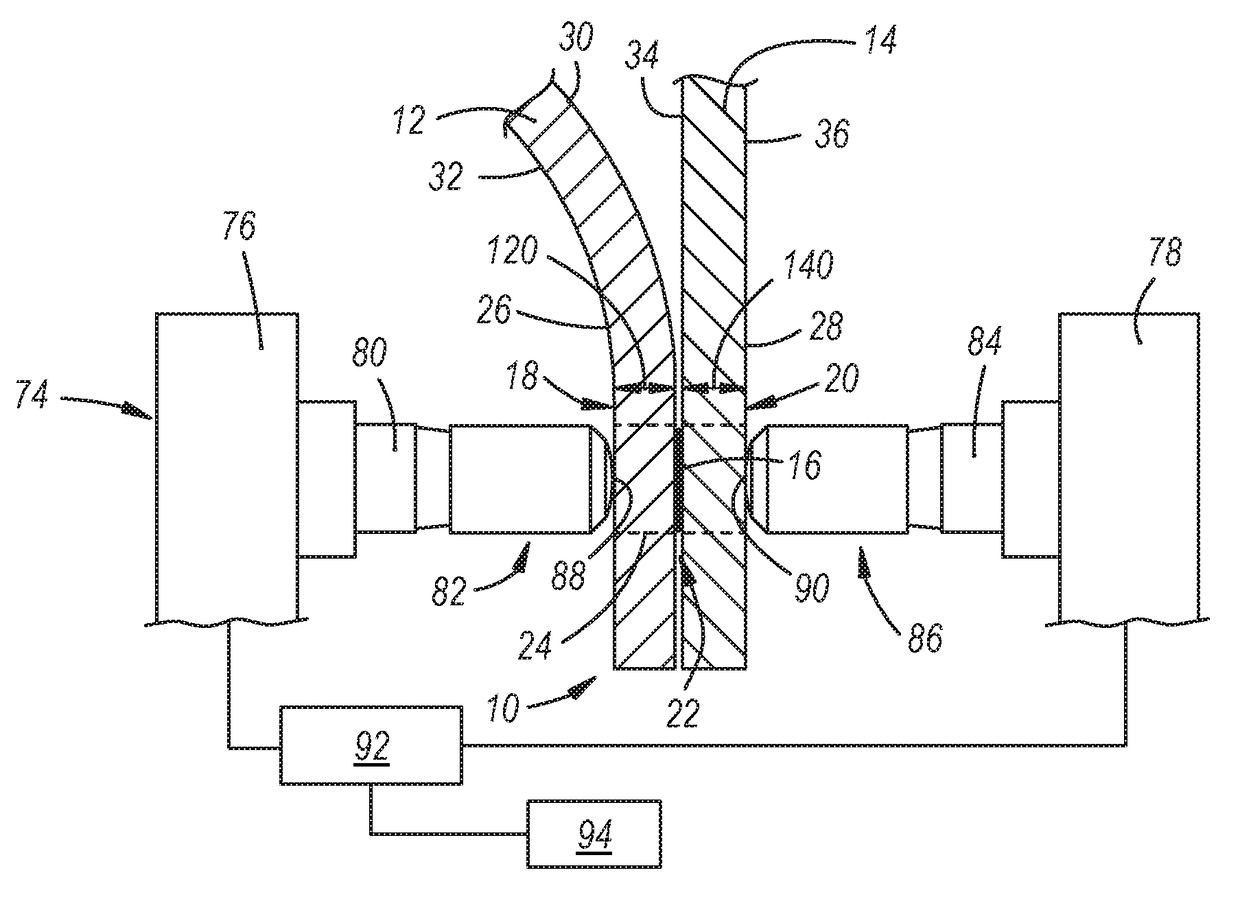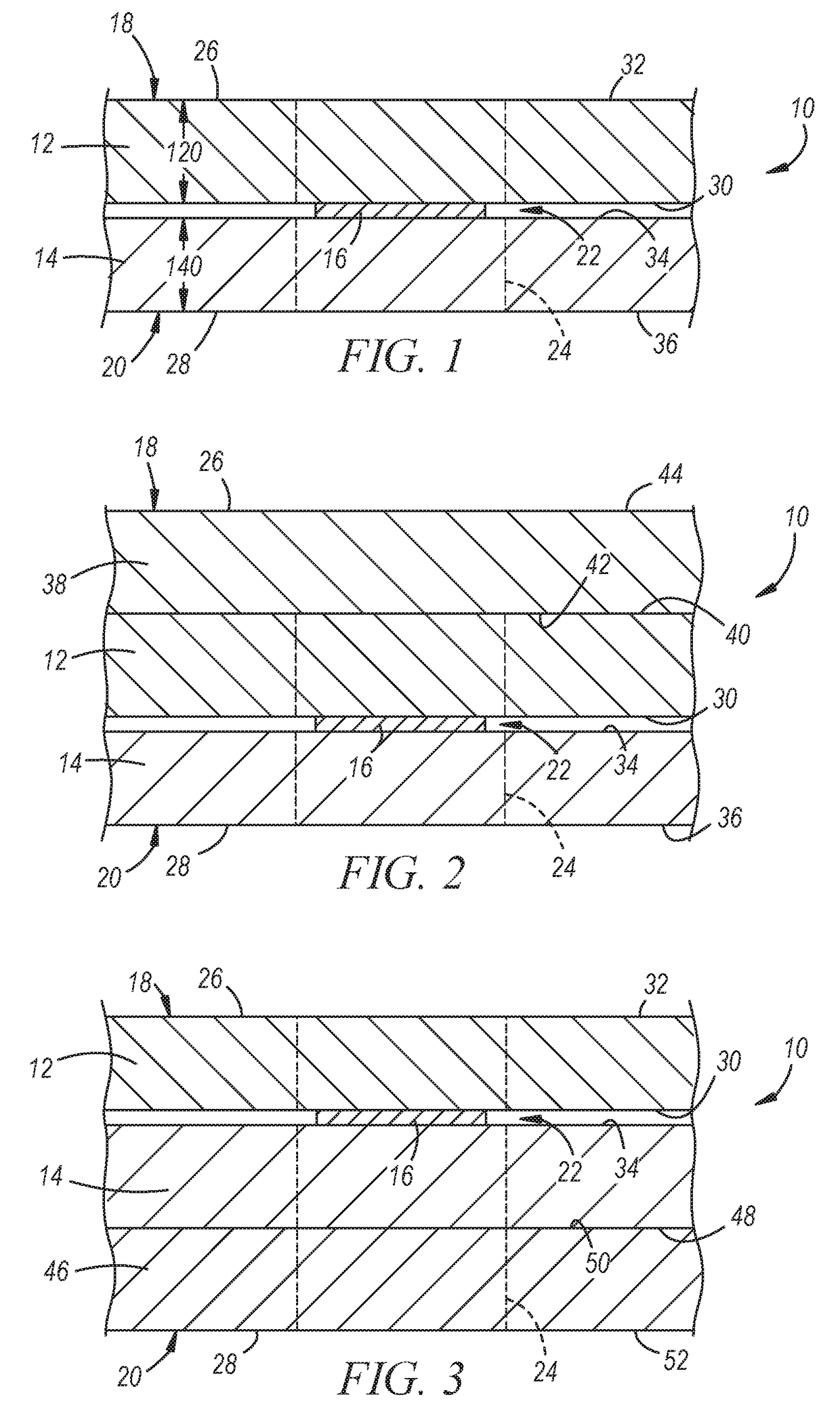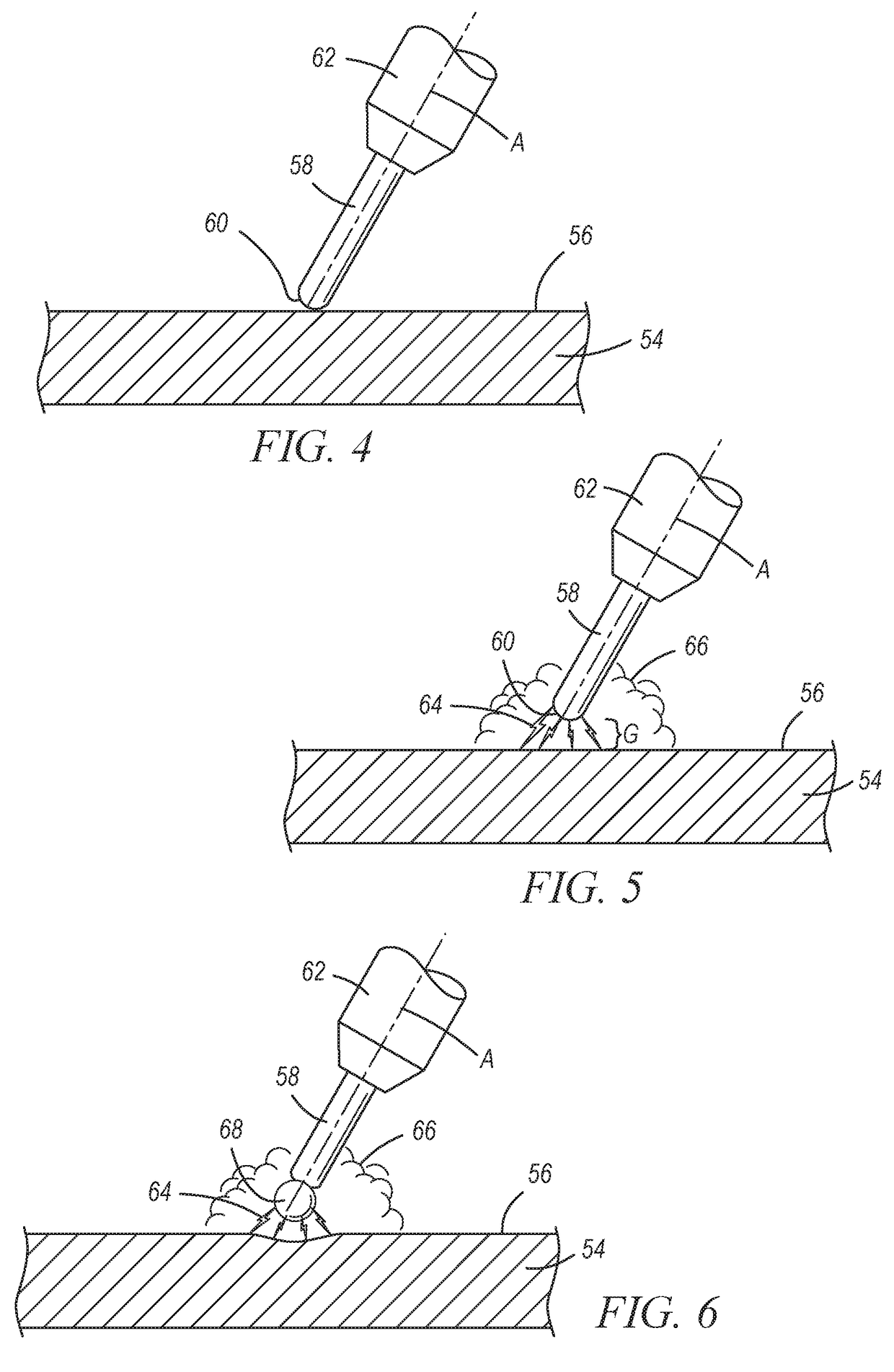Resistance spot welding aluminum to steel using preplaced metallurgical additives
a technology of metallurgical additives and spot welding, which is applied in the direction of welding/cutting media/materials, welding apparatus, manufacturing tools, etc., can solve the problems of difficult spot welding of aluminum workpieces to steel workpieces, source of near-interface defects, and difficult to effectively control and concentrate heat within aluminum workpieces
- Summary
- Abstract
- Description
- Claims
- Application Information
AI Technical Summary
Benefits of technology
Problems solved by technology
Method used
Image
Examples
Embodiment Construction
[0028]A method of resistance spot welding an aluminum workpiece and a steel workpiece with the assistance of an intermediate metallurgical additive placed between the workpieces is disclosed. The intermediate metallurgical additive is adhered to a faying surface of the aluminum workpiece or a faying surface of the steel workpiece, and is positioned between the faying surfaces of the two workpieces within a welding zone when the workpieces are subsequently assembled in a lapped configuration into a workpiece stack-up. The intermediate metallurgical additive is exposed to the molten aluminum alloy weld pool during spot welding and is designed counteracts the growth of a Fe—Al intermetallic layer at the bonding interface of the resultant weld joint and a surface of the intermediate metallurgical additive, the steel workpiece, or both. For instance, the intermediate metallurgical additive may be a metal that contains carbon, silicon, nickel, manganese, chromium, cobalt, and / or copper. A...
PUM
| Property | Measurement | Unit |
|---|---|---|
| Thickness | aaaaa | aaaaa |
| Electrical resistance | aaaaa | aaaaa |
| Refractory | aaaaa | aaaaa |
Abstract
Description
Claims
Application Information
 Login to View More
Login to View More - R&D
- Intellectual Property
- Life Sciences
- Materials
- Tech Scout
- Unparalleled Data Quality
- Higher Quality Content
- 60% Fewer Hallucinations
Browse by: Latest US Patents, China's latest patents, Technical Efficacy Thesaurus, Application Domain, Technology Topic, Popular Technical Reports.
© 2025 PatSnap. All rights reserved.Legal|Privacy policy|Modern Slavery Act Transparency Statement|Sitemap|About US| Contact US: help@patsnap.com



